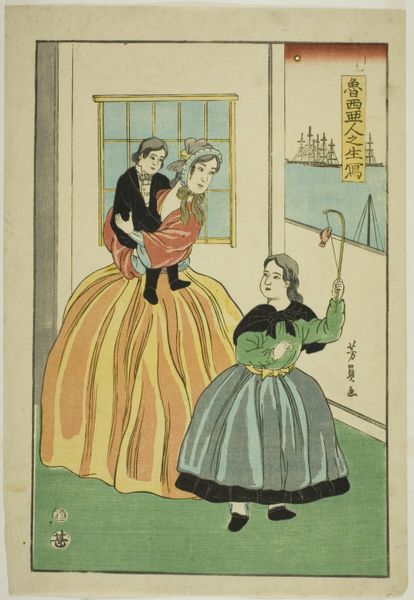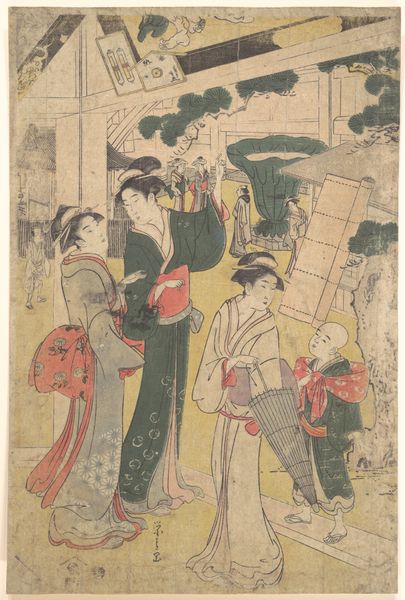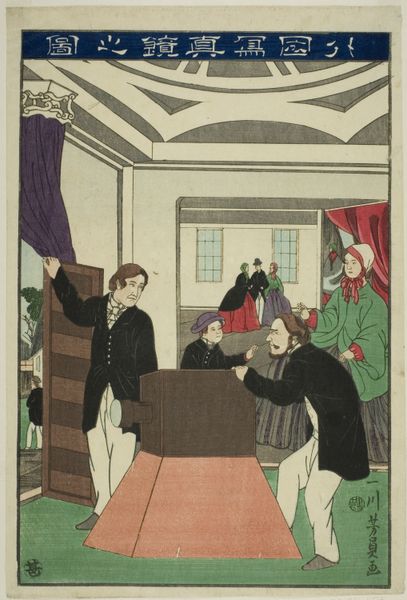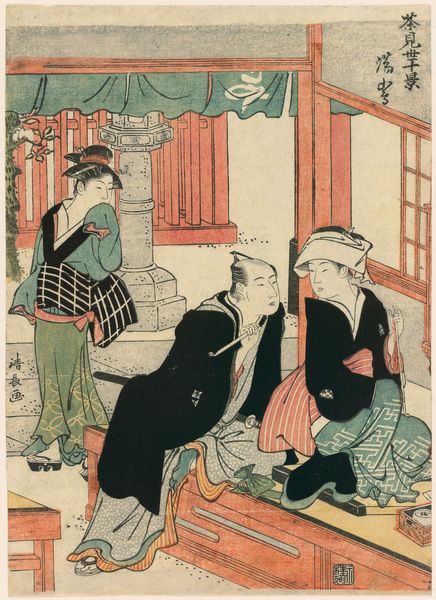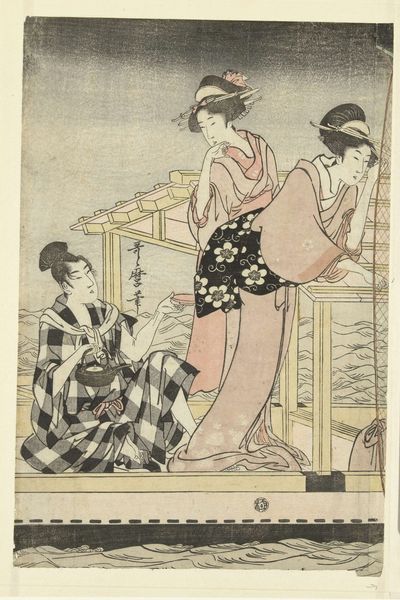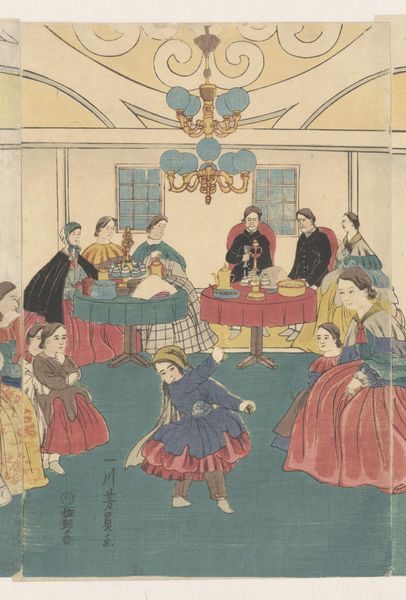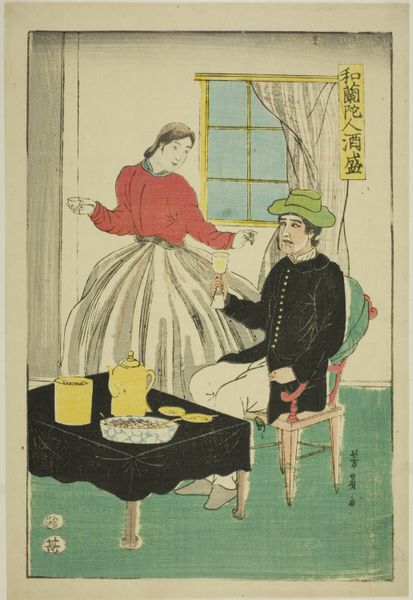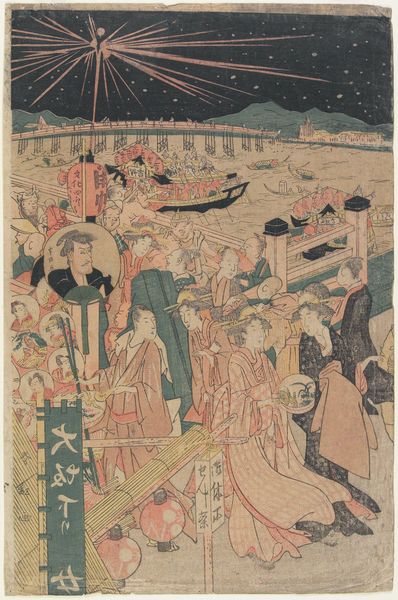
Foreign Children at Play (Gaikoku kodomo yugi no zu) 1860
0:00
0:00
# print
#
asian-art
#
landscape
#
ukiyo-e
#
watercolor
Copyright: Public Domain
Editor: So, this is "Foreign Children at Play," or "Gaikoku kodomo yugi no zu," a woodblock print made around 1860 by Utagawa Yoshikazu. It’s housed at the Art Institute of Chicago. The scene of these children feels so...staged. Almost like a display of Western-ness for a Japanese audience. What is your take on this image? Curator: It's a fascinating piece, particularly considering the socio-political context. This print dates to a period of intense Westernization in Japan. The children depicted appear to be European, and their presence in this Ukiyo-e print signifies Japan's growing engagement with the outside world after a long period of isolation. How do you think the choice of medium impacts its reception? Editor: Well, the ukiyo-e style would have been immediately recognizable to a Japanese audience, familiar and accessible. Using that established visual language to portray something so new - Western children and their pastimes - feels like a way of integrating this foreign presence into the cultural landscape. Curator: Precisely. The "floating world" of ukiyo-e typically depicted entertainment districts and celebrated Japanese culture. This piece shifts that focus, documenting the burgeoning presence of foreigners, but framed and perhaps mediated, through that very Japanese lens. What about the composition itself? What does the arrangement of figures suggest to you? Editor: The kids seem scattered, almost awkwardly placed. The use of Western figures in a kind of flattened perspective reminds me how the Japanese at the time, understood --or *didn’t* understand -- Western culture. Curator: That “awkwardness,” as you call it, speaks volumes. It is possible that the printmakers lacked firsthand experience of the West. What does this reveal about cultural exchange and visual representation? Editor: I never thought about it like that before. Seeing how art can be a primary source to examine the details of social and political factors from that period changes the viewing experience so much. Curator: Precisely!
Comments
No comments
Be the first to comment and join the conversation on the ultimate creative platform.


